Complete Solutions to Numerical MCQs Single Options Correct of chapter GEOMETRICAL OPTICS of Class 12 book with complete answers and questions
| Class 12 | PHYSICS |
| Chapter | GEOMETRICAL OPTICS |
| PHYSICS GALAXY | Numerical MCQs Single Options Correct |
| Number Of Questions | 51 |
| Academic Year | 2023-24 |
An equilateral prism deviates a ray through `40^@` for two angles of incidence differing by `20^@`. The possible angles of incidences is
View Solutiontwo plane mirror `L_(1) and L_(2)` are parallel to each other and 3m apart. A person standing x m from the right mirror `L_(2)` looks into this mirror and sees a series of images, The distance between the first and second image is 4 m. Then, the value of x is
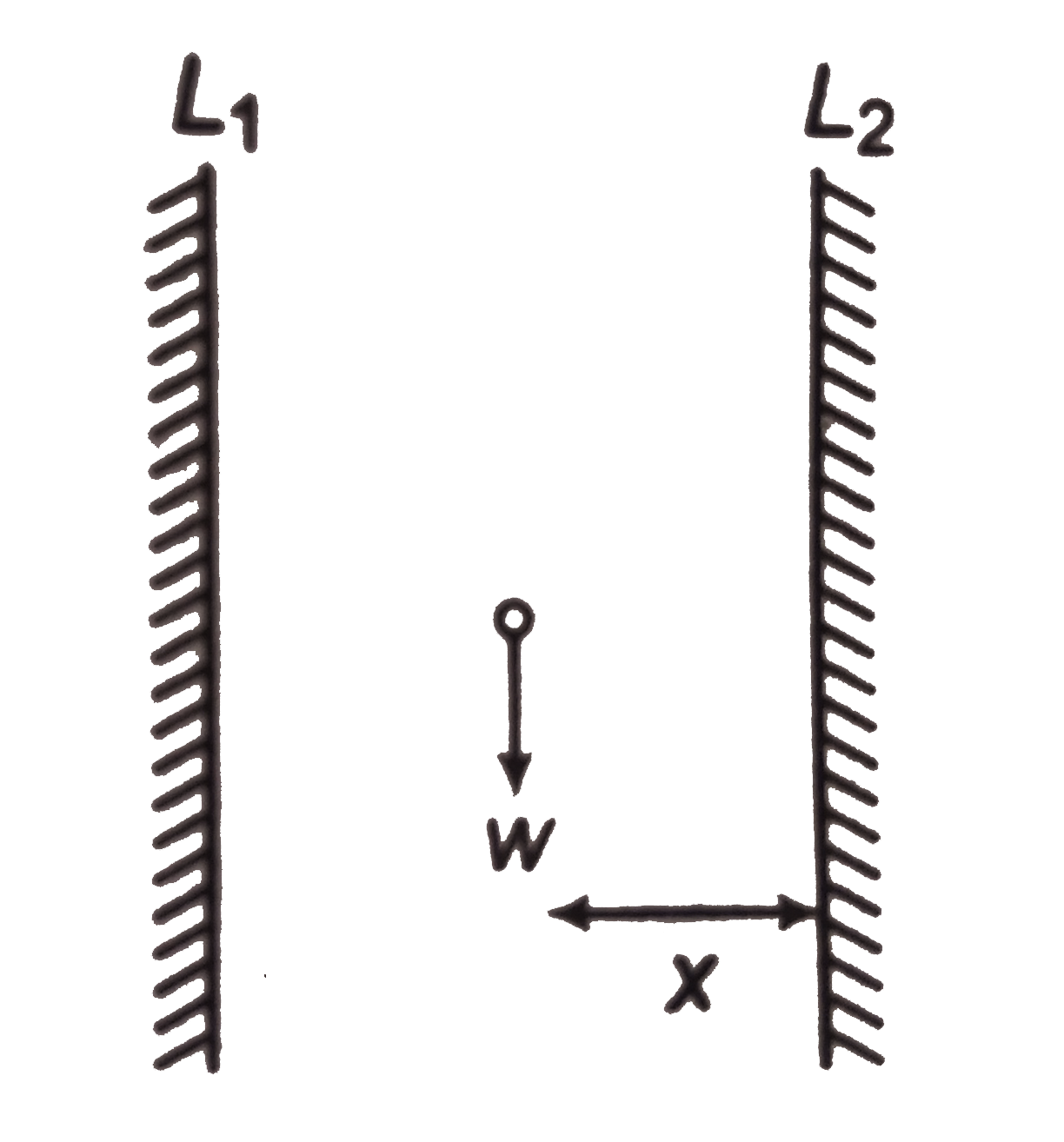
View SolutionAn elevator at rest which is at 10th floor of a building is having a plane mirror fixed to its floor. A particle is projected with a speed `(sqrt(2))m//s` and at `45^(@)` with the horizontal as shown in the figure. At the very instant of projection, the cable of the elevator breaks and the elevator starts falling freely. what will be the separation between the particles and is image 0.5 s after the instant of projection?
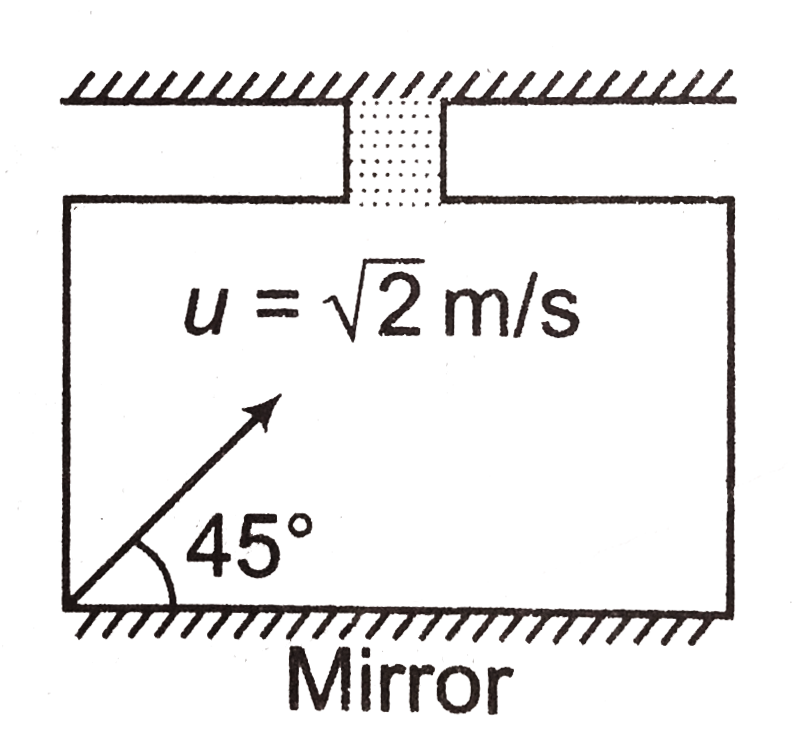
View SolutionA plane mirror is moving with velocity `4 (hat i) + 4 (hat j) + 8 (hat k)`. A point object in front of the mirror moves with a velocity `3 (hat i) + 4 (hat j) + 5 (hat k)`. Here, `hat k` is along the normal to the plane mirror and facing towards the object. The velocity of the image is
View SolutionTwo plane mirrors AB and AC are inclined at an angle `theta = 20^(@)`. A ray of light starting from point P is incident at point Q on the mirror AB, then at R on mirror AC and again on S on AB. Finally the ray ST goes parallel to mirror AC. The angle which the ray makes with the normal at point Q on mirror AB is
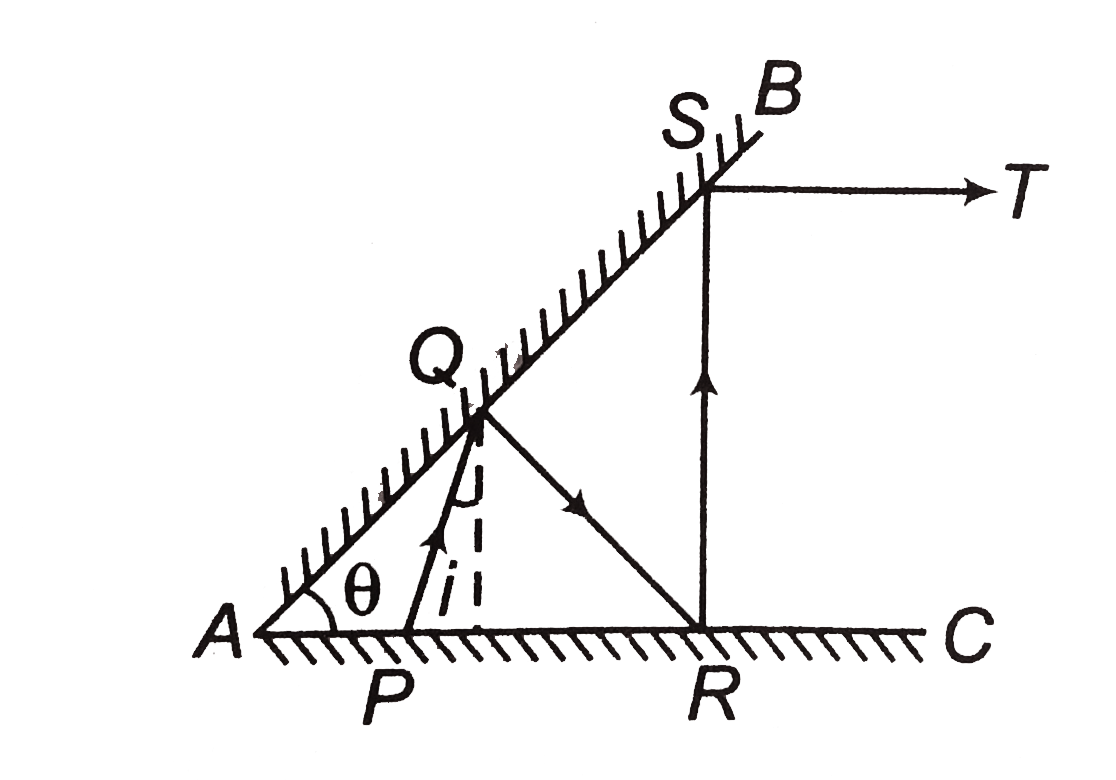
View SolutionA person's eye is at a height of `1.5m`. He stands infront of a `0.3m` long palane mirror which is `0.8m` above the ground. The length of the image he sees of himself is:
View SolutionA plane mirror of length 8 cm is present near a wall in situation as shown in figure-. Then the length of spot formed on the wall is:
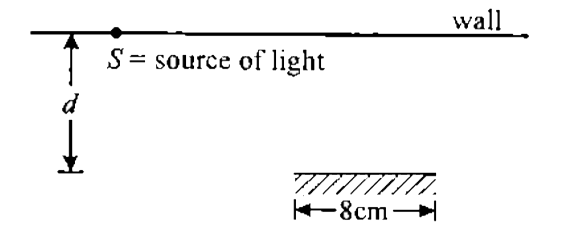
View SolutionAn object O is kept in air in front of a thin plano-convex lens of radius of curvature `10 cm.` Its refractive index at `3//2` and the medium towards right of the plane surface is water of refractive index `4//3.` What should be distance x of the object so that the rays becomes parallel finally?
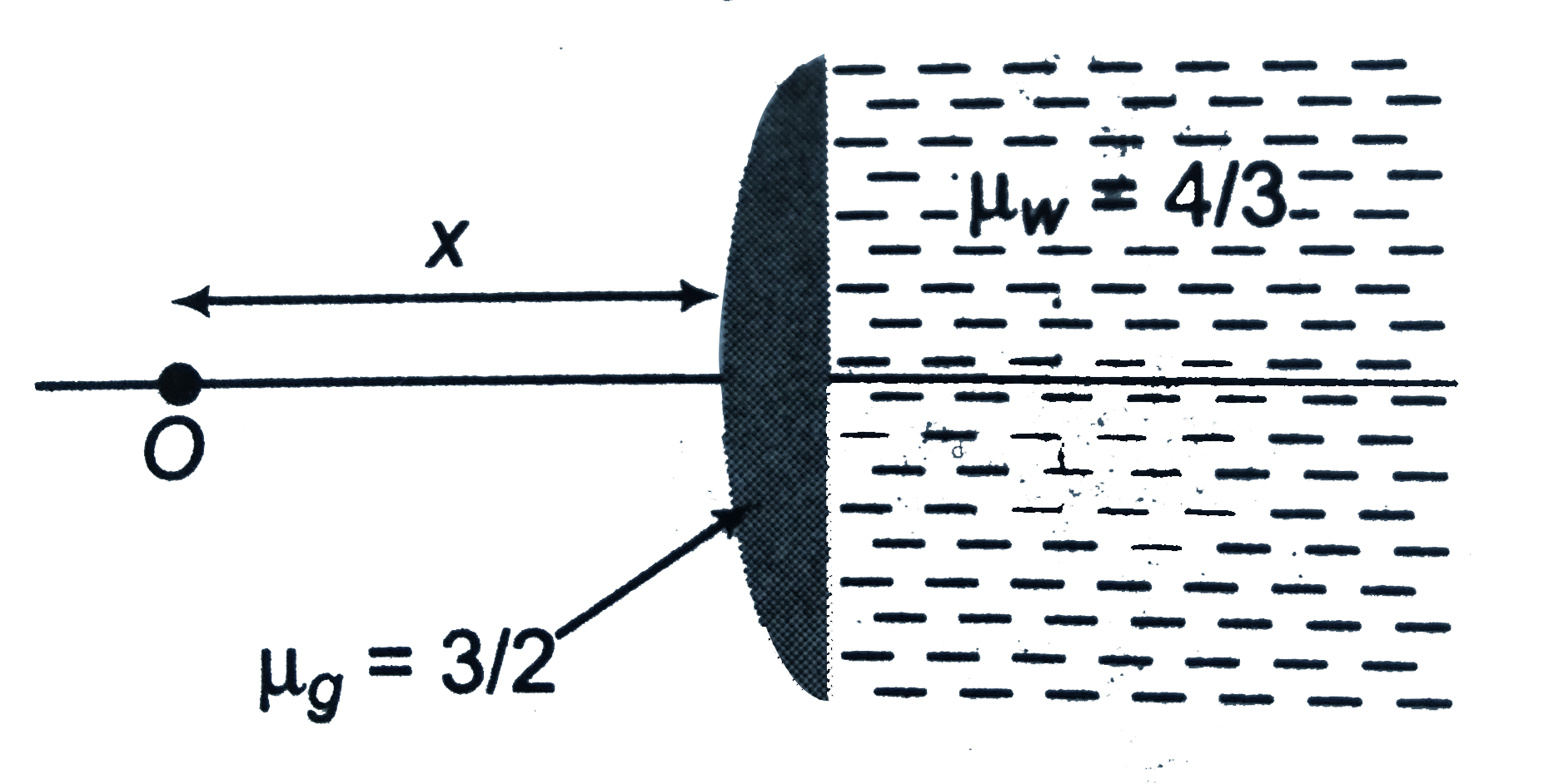
View SolutionA diverging lens of focal length 10cm is placed 10cm in front of a plane mirror as shown in Fig. Light from a very far away source falls on the lens. What is the distance of final image?
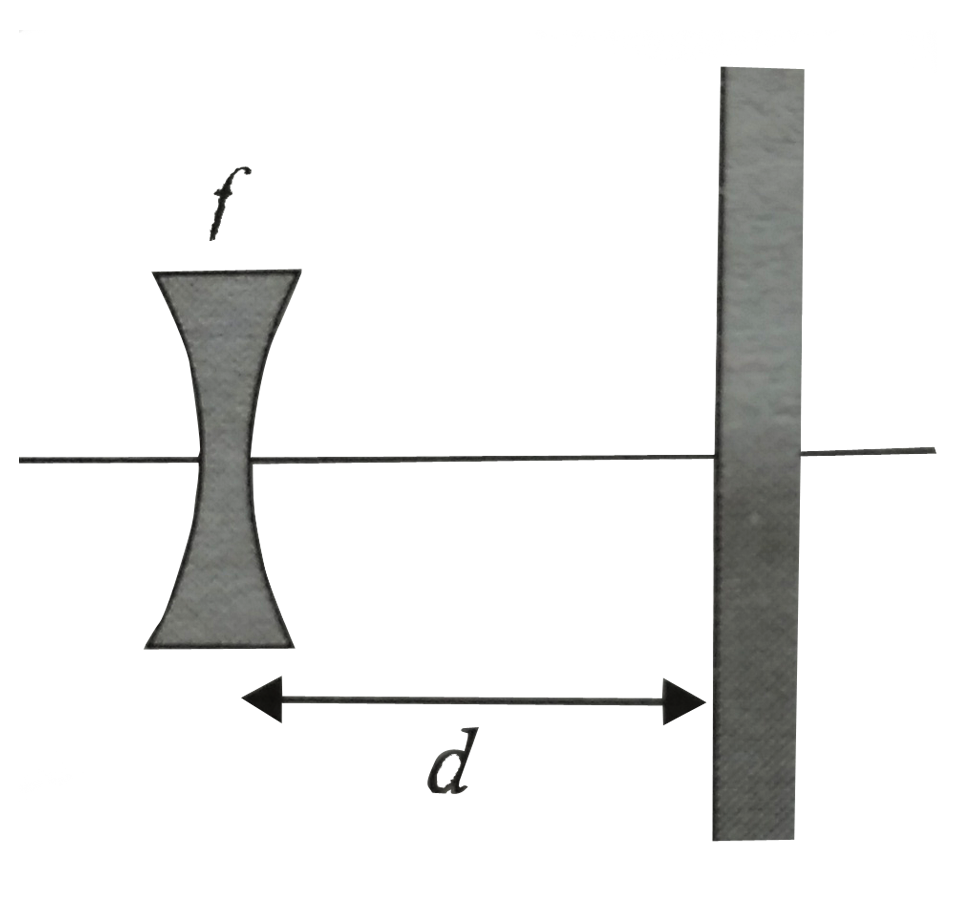
View SolutionA fish is near the centre of a spherical water filled(`mu=4//3`)fish bowl,A child stands in air ata distance `2R`(R`is the radius of curvature of the sphere)from the centre of the bowl.At what distance from the centre would the child nose appear to the fish situated at the centrer:
View SolutionAn object is placed at a distance of 15cm from a convex lenx of focal length 10cm. On the other side of the lens, a convex mirror is placed at its focus such that the image formed by the combination coincides with the object itself. The focal length of the convex mirror is
View SolutionTwo planoconvex lenses each of the focal length of`10cm`&refractive index`3//2`are placed as shwon .In the space left water`(R.I.=4//3)`is filled.Then whole arrangement is in air.The optical power of the system is(in diopters).
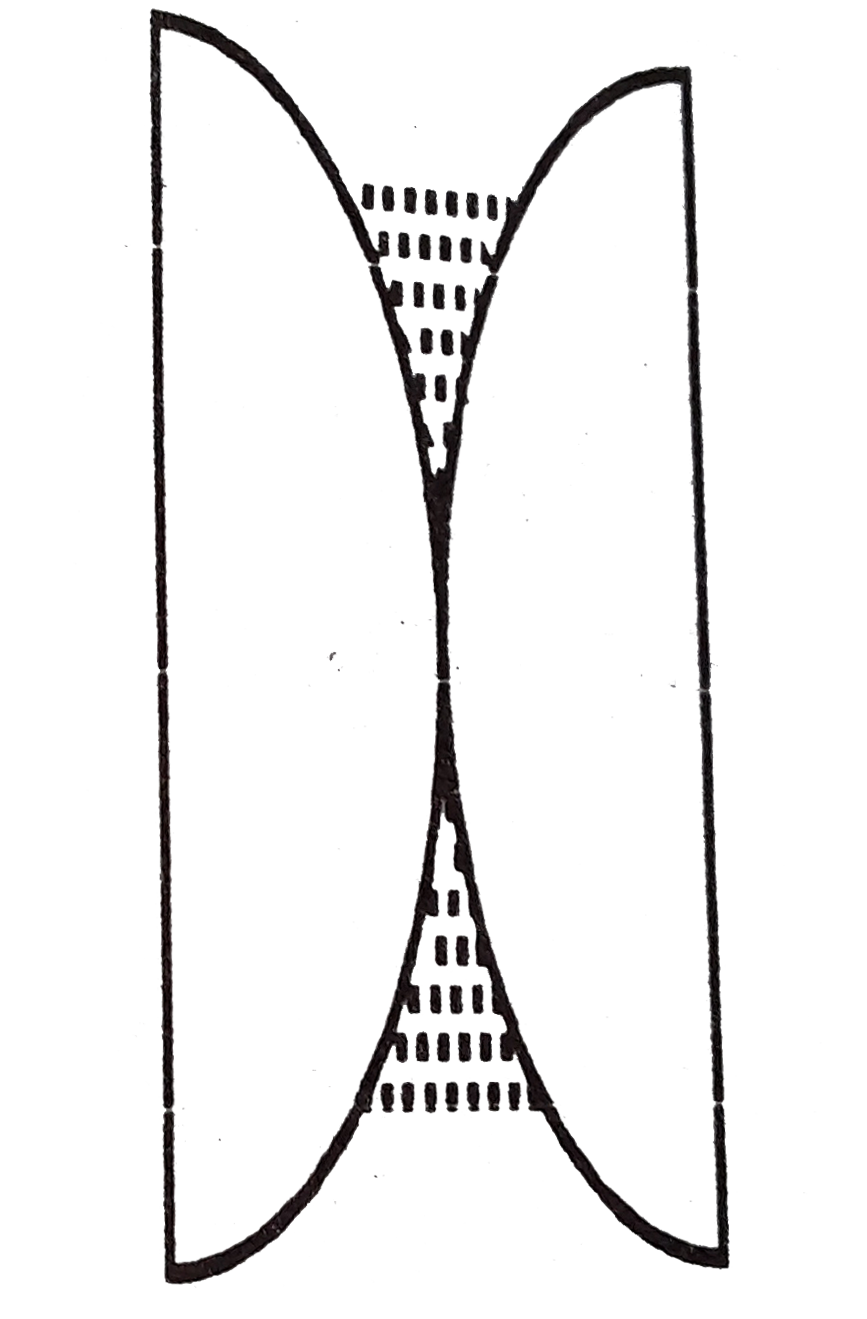
View SolutionThe curvature radii of a concavo-convex glass lens are `20cm`and `60cm`.th convex surface of the lens is silvered .With the lens horizotnal ,the concave surface is filled with water.The focal length of the effective mirror is (`mu`of glass=`1.5,mu`of water=`4//3`
View SolutionA plano-convex lens when silvered on the plane side behaves like a concave mirror of focal length 60 cm. However when silvered on the convex side it behaves like a concave mirror of focal length 20 cm. Then the refractive index of the lens
View SolutionA prism has refractive index `sqrt((3)/(2))` and refractive angle `90^@`. Find the minimum deviation produced by prism
View SolutionA certain prism is found to produce a minimum of`38^(@)`.It produces a deviation of `44^(@)`when the angle of incident is either`42^(@)`or`62^(@)` .What is the angle of incidence when it is undergoing minimum deviation?
View SolutionLight ray is incident on a prism of angle `A=60^(@)`and refractive index`mu=sqrt(2)`.the angle of incidence at which the emergent ray grazes the surface is given by
View SolutionA transparent cylinder has its right half polished so as to act as a mirror. A paraxial light ray inciden from left, that is parallel to the principal to the incident ray as shown. The refractive index n of the material of the cylinder is
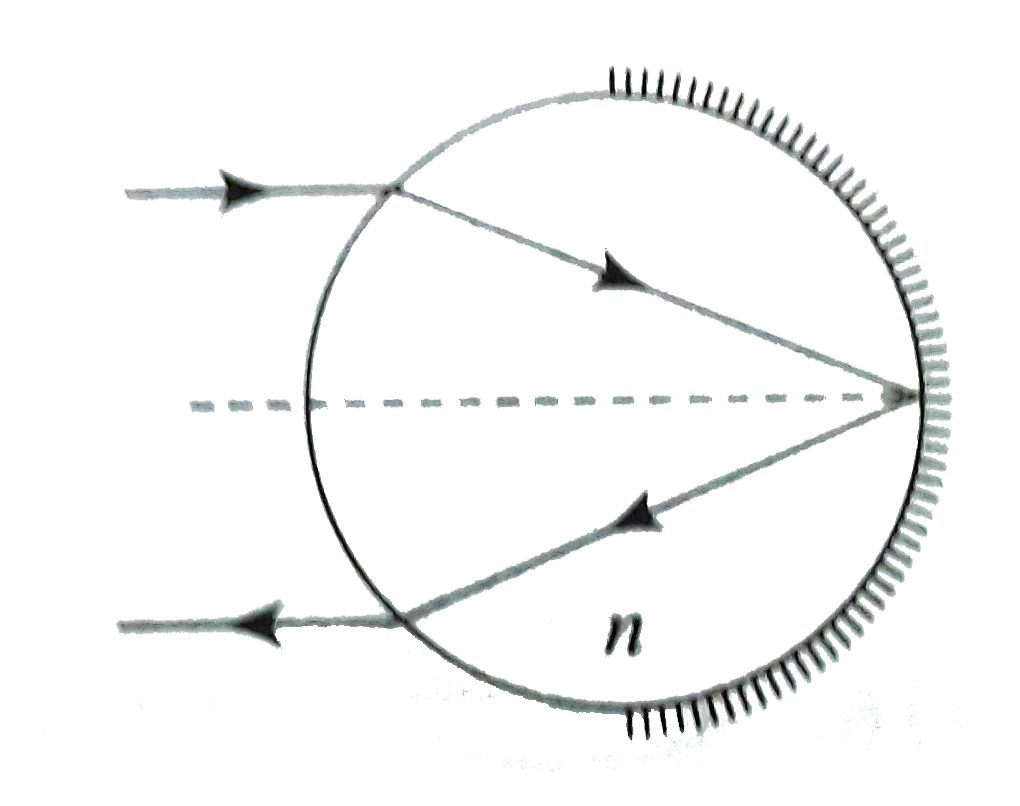
View SolutionA composite slab consisting of different media is placed in front of a concave mirror of radius of curvature 150 cm as shown in figure., The whole arrangement is immersed in water. Locate the final image of point object O.
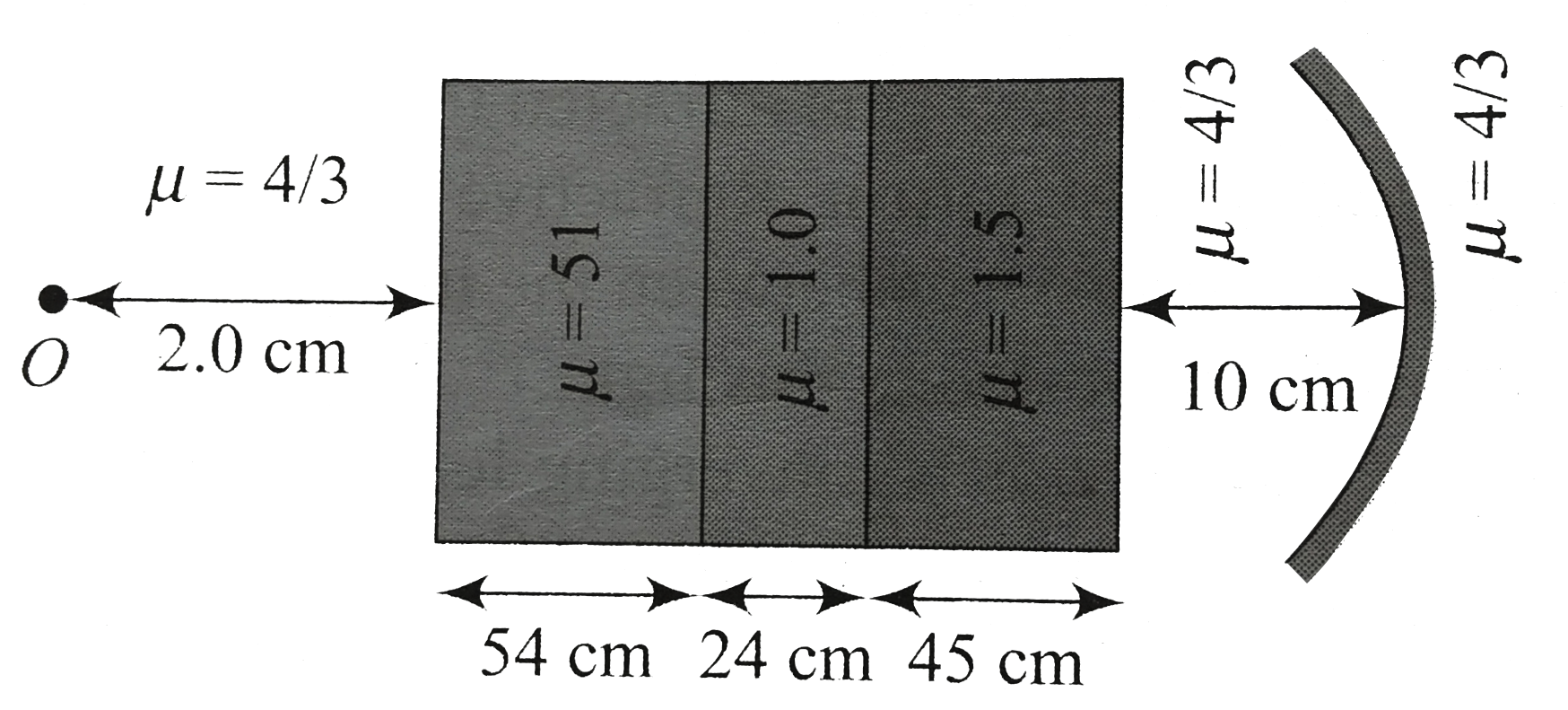
View SolutionA luminous point object is moving along the principal axis of a concave mirror of focal length 12cm towards it. When its distance from the mirror is 20cm its velocity is `4cm//s`. The velocity of the image in `cm//s` at that instant is
View SolutionTwo blocks each of masses m lie on a smooth table. They are attached to two other masses as shown in figure. The pulleys and strings are light. An object O is kept at rest on the table. The sides AB and CD of the two blocks are made reflecting. The acceleration of two images formed in those two reflecting surfaces with respect to each other is
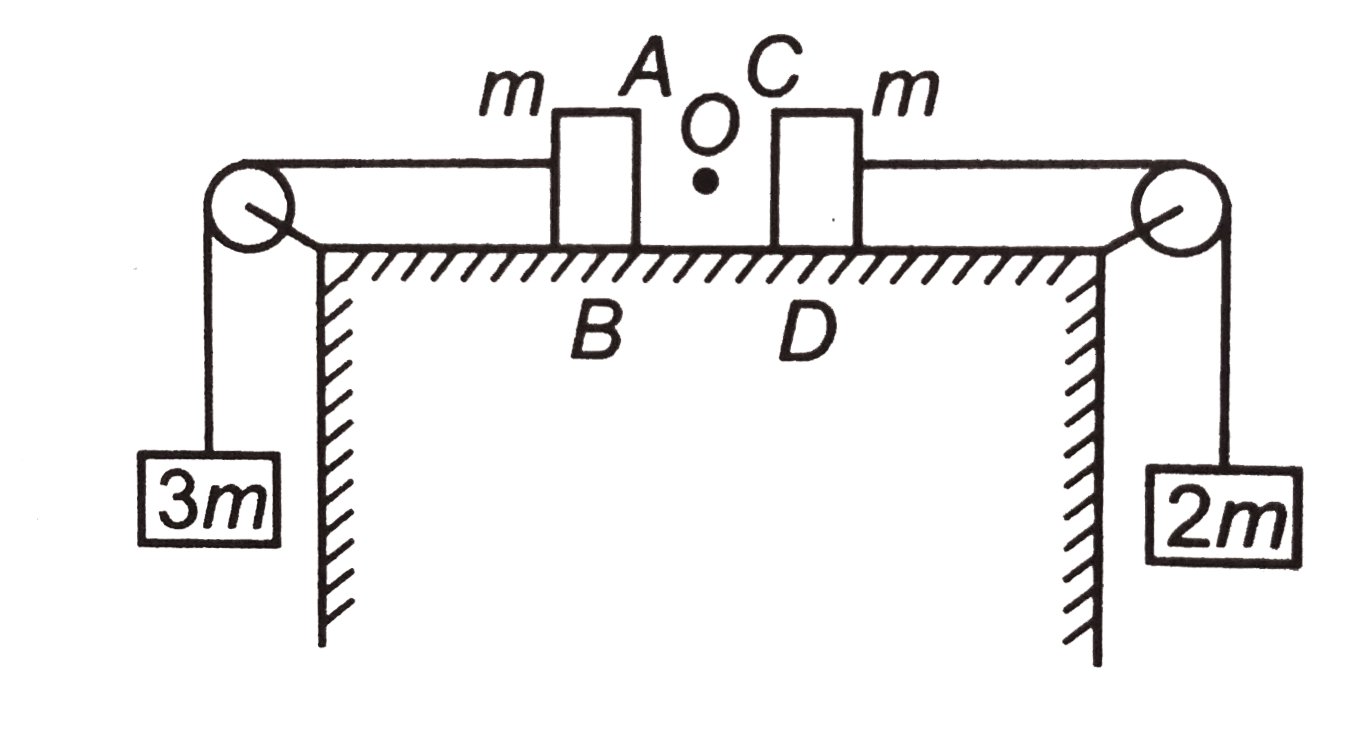
View SolutionAn opaque sphere of radius a is just immersed in a transparent liquid as shown in figure. A point source is placed on the vertical diameter of the sphere at a distance all from the top of the sphere.One ray originating from the point source after refraction from the air liquid interface forms tangent to the sphere. The angle of refraction for that particular ray is `30^(@)`. The refractive index of the liquid is:
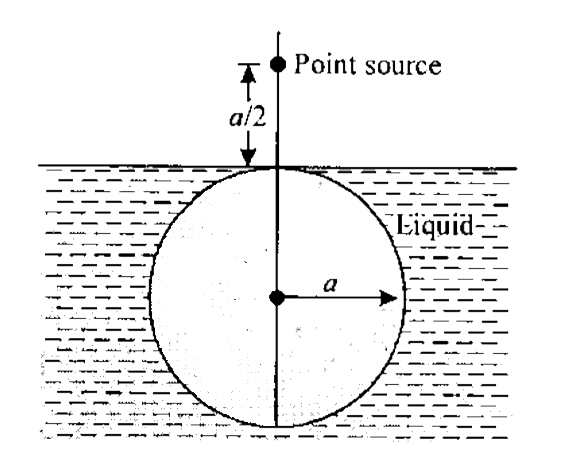
View SolutionIn the figure ABC is the cross-section of a right angled prism and BCDE is the cross-section of a glass slab. The value of theta so that light incident normally on the face AB does not cross the face BC is `(Given sin^-1 3//5=37^@)`

View SolutionA linear object AB is placed along the axis of a concave mirror. This object is moving towards the mirror with speed U. The speed of the image of the point A is 4U and the speed of the image of B is alSO 4U btu in opposite direction. If the center of the line AB is at a distance L from the mirror then find out the length of the object.
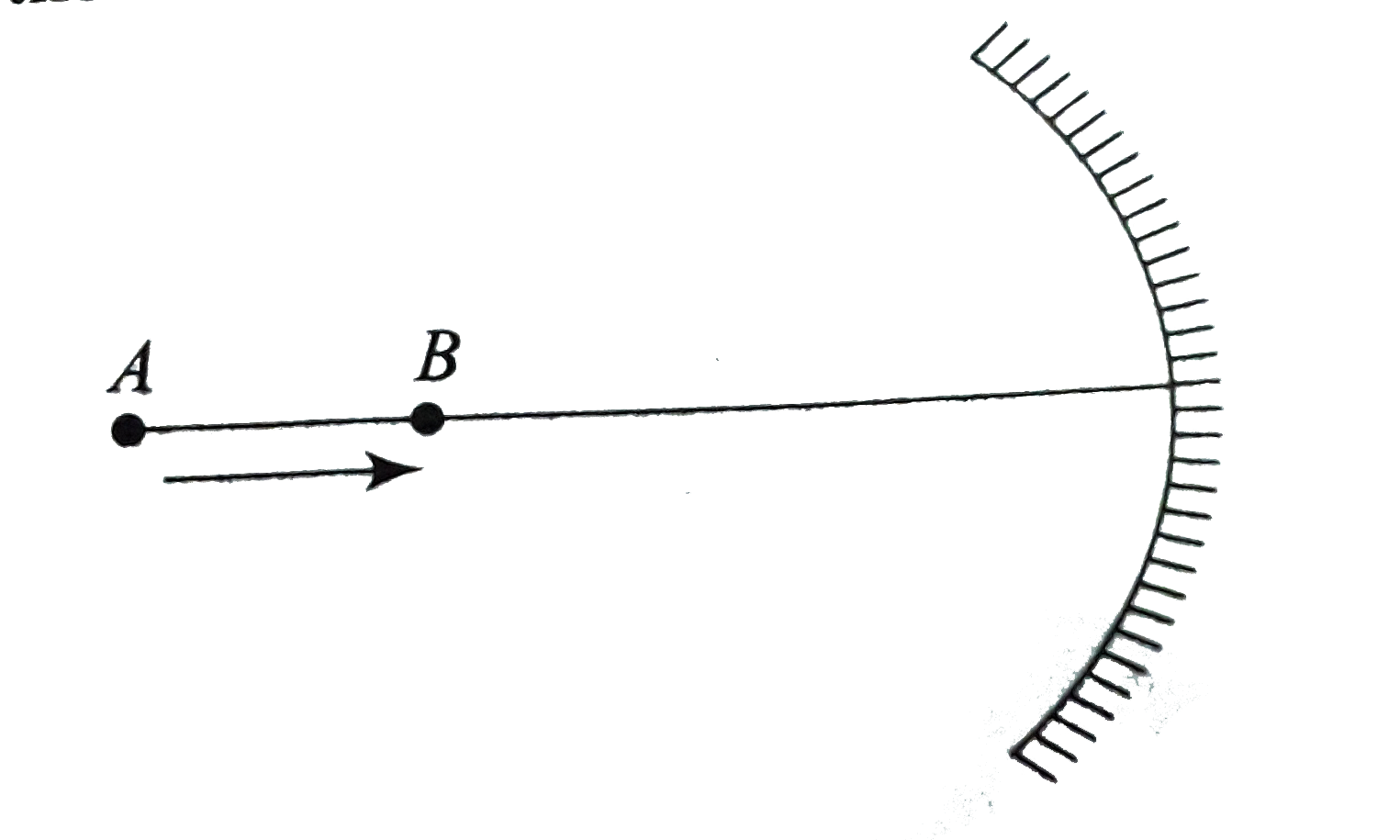
View SolutionA small rod ABC is put in water making an angle `6^(@)` with vertical. If it is viewed paraxially from above, it will look like bent shaped ABC'. The angle of bending `(/_CBC')` will be in degree is `(n_(w)=(4)/(3))`.
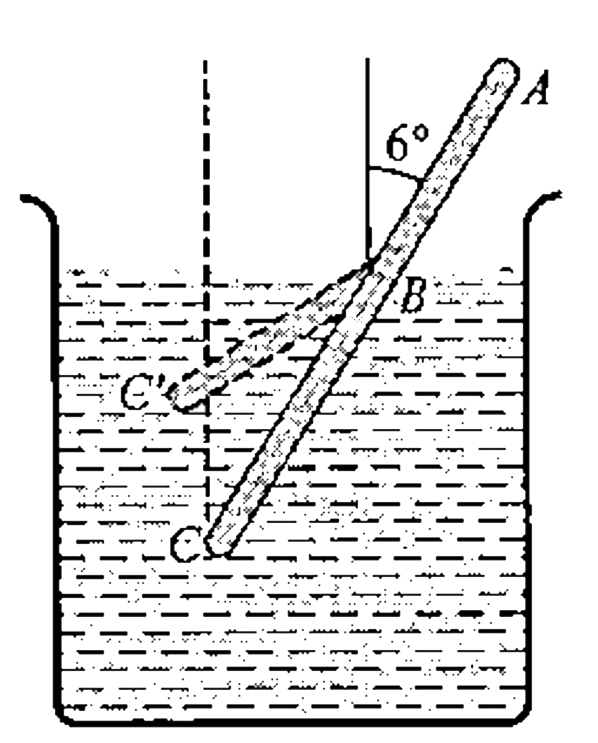
View SolutionIt is found that all electromagnetic signals sent from A towards B reach point C inside the glass sphere, as shown in figure. The speed of electromagnetic signals in glass cannot be:
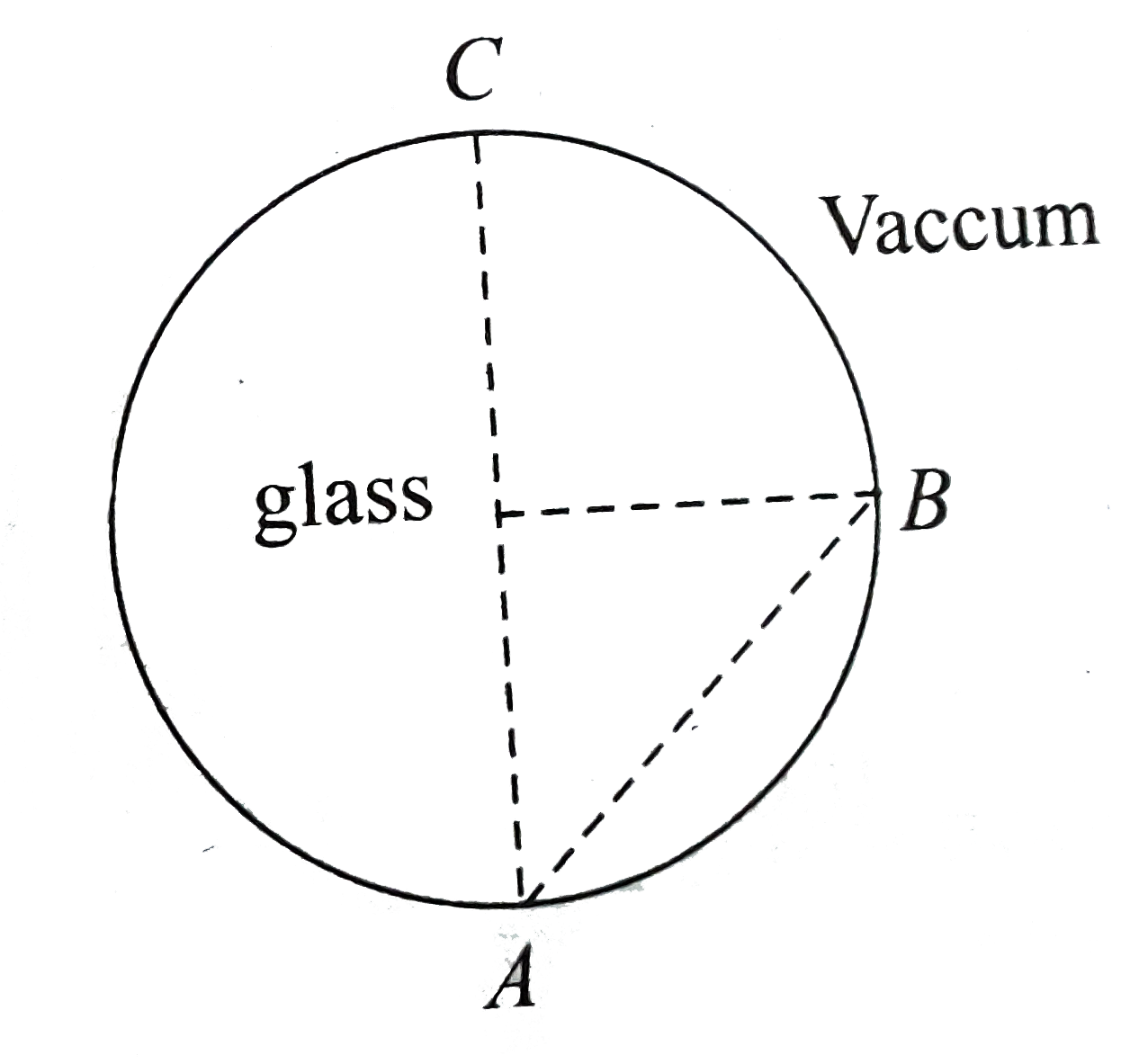
View SolutionA concave mirror of focal length `2 cm` is placed on a glass slab as shown in the figure. The image of point object O formed due to reflection at mirror and then refraction by the slab
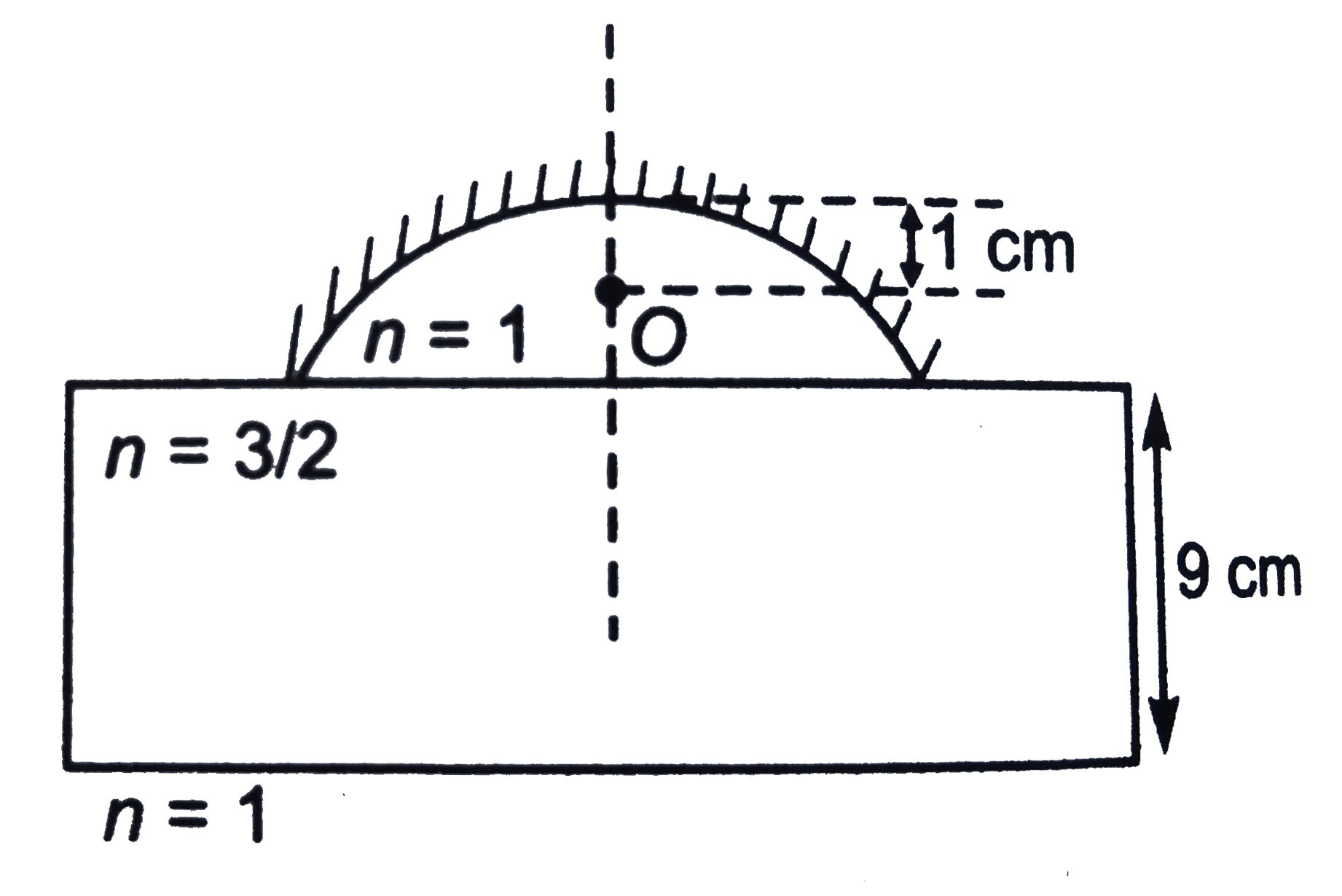
View SolutionIn the figure, an object is placed at distance `25 cm` from the surface of a convex mirror, and a plane mirror is set so that image formed by the two mirrors lie adjacent to each other in the same plane. The plane mirror is placed at `20 cm` from the object. What is the radius of curvature of the convex mirror ?
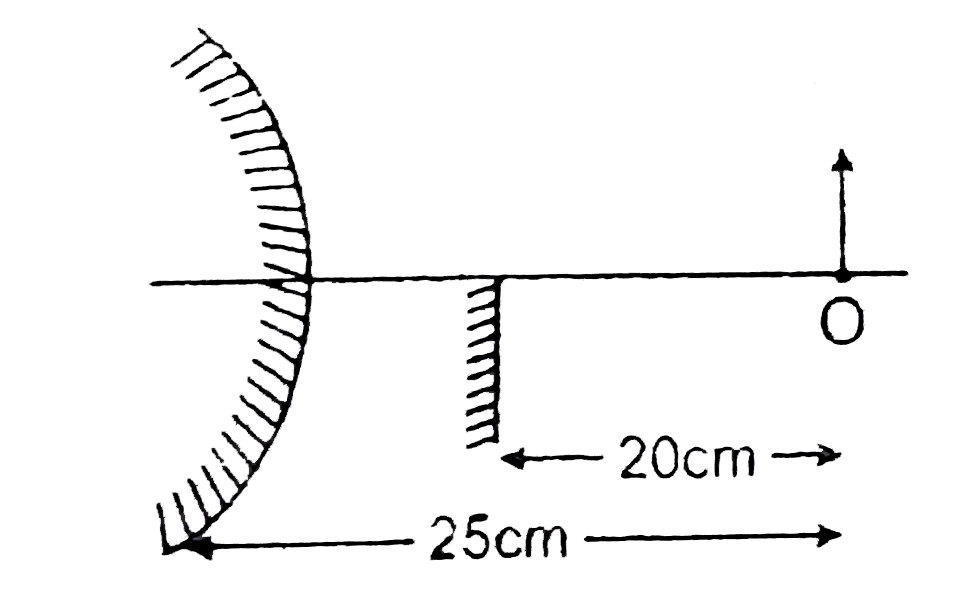 .
.
View SolutionA uniform, horizontal parallel beam of light is incident upon a prism as shown. The prism is in the shape of a quarter cylinder, of radius 5cm, and has refractive index 5/3. The width of the regionat which the incident rays after normal incidence on plane surface and subsequent refraction at curved surface intersect on x axis is (Neglect the ray which travels along x-axis)
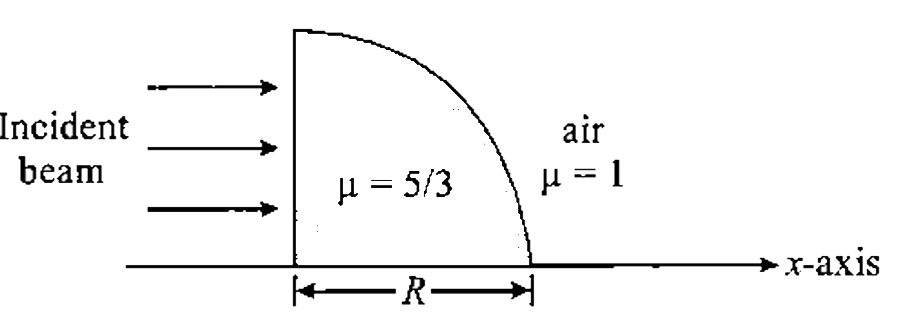
View SolutionSharp image of extended object which is placed perpendicular to the principle axis of a lens is `eta` times that of the object for a particular position of object on a screen. Without disturbing the position of object and screen, by shifting lens a position can be obtained where the sharp image is `1//eta` times that of object. Ratio of difference between the two positions of lens to the focal length of lens is:
View SolutionA beaker is filled with water as shown in figure (a). The bottom surface of the beaker is a concave mirror of large radius of curvature and small aperture. The height of water is `h = 40 cm`. It is found that when an object is placed 4 cm above the water surface, the image coincides with the object. Now the water level h is reduced to zero but there will still be some water left in the concave part of the mirror as shown in figure (b). The new height of the object h' above the new water surface so that the image again coincides with the object, will be (Refractive index of water `= 4//3`)

View SolutionWhich of the following relations is correct for a spherical mirror if a point object is kept on the principal axis ['P' is pole 'C' is centre object is at point 'O'. Image is at point 'I'].
View SolutionA plane mirror is placed with its plane at an angle `30^(@)` with the y-axis. Plane of the mirror is perpendicular to the xy-plane and the length of the mirror is 3m. An insect moves along x-axis starting from a distant point, with speed 2 cm/s. The druation of the time for which the insect can see its shown image in the mirror is:
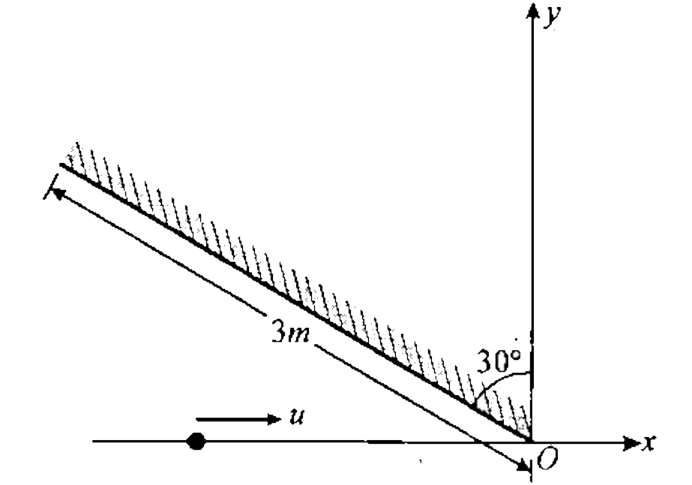
View SolutionA partical revolves in clockwise direction (as seen from point A) in a circle C of radius 1 cm and completes one revolution in 2 sec. The axis of the circle and the principal axis of the mirror M coincides, call it AB. The radius of curvature of the mirror of 20cm. Then, the direction of revolution (as seen from A) of the image of the partical and its speed is
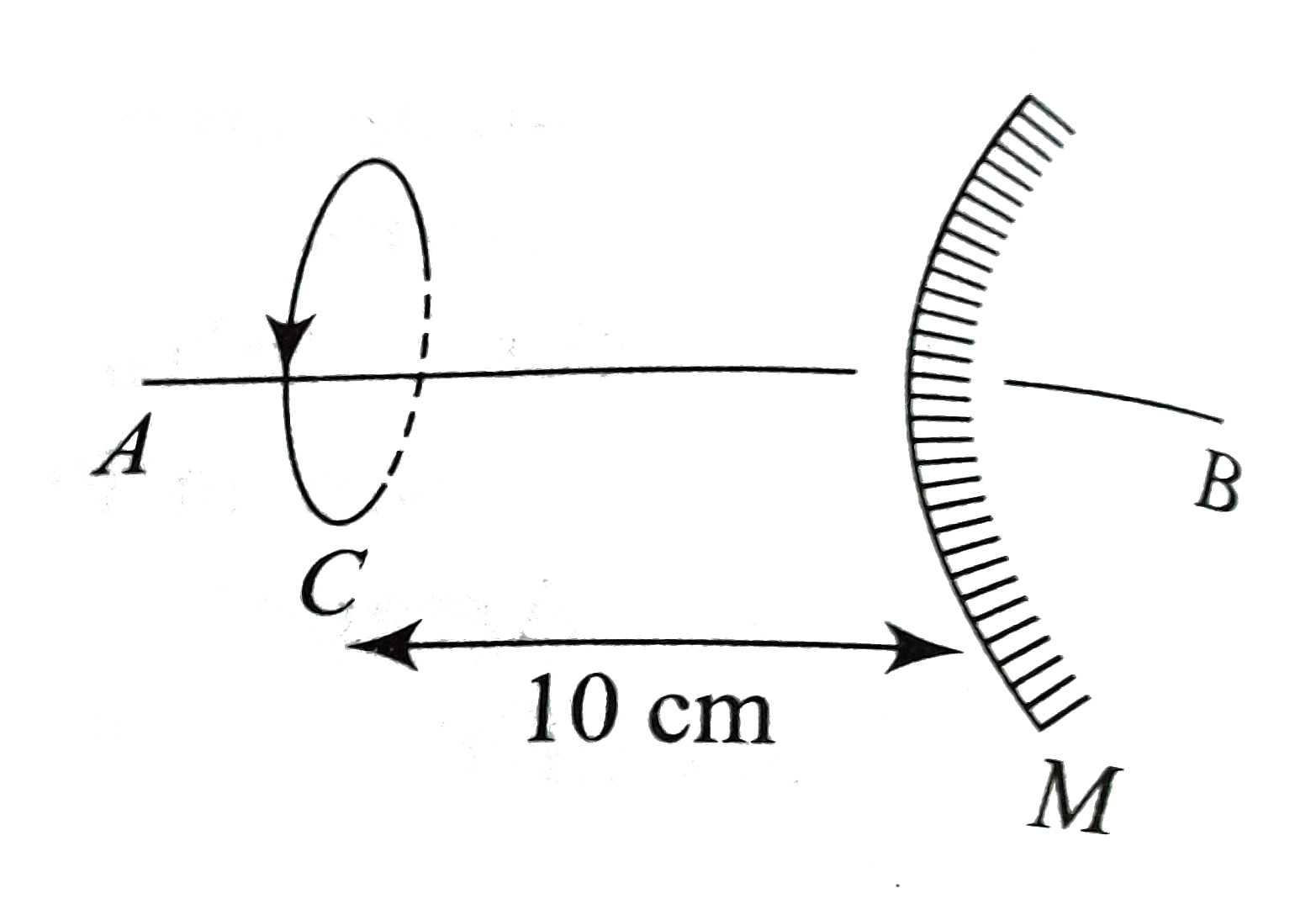
View SolutionAn elevator at rest which is at 10th floor of a building is having a plane mirror fixed to its floor. A particle is projected with a speed `(sqrt(2))m//s` and at `45^(@)` with the horizontal as shown in the figure. At the very instant of projection, the cable of the elevator breaks and the elevator starts falling freely. what will be the separation between the particles and is image 0.5 s after the instant of projection?

View SolutionA beam of light converges towards a point `O` ,behind a convex mirror of focal length `20` cm.Find the nature and position of image if the point `O` is-
(1) `10`cm behind the mirror, (2) `30`cm behind the mirror
View SolutionTwo thin slabs of refractive indices `mu_(1)` and `mu_(2)` are placed parallel to each other in the x-z plane. If the direction of propagation of a ray in the two media are along the vectors `vec(r)_(1) = a hati +b hatj` and `vec(r)_(2) = c hati +d hatj` then we have:
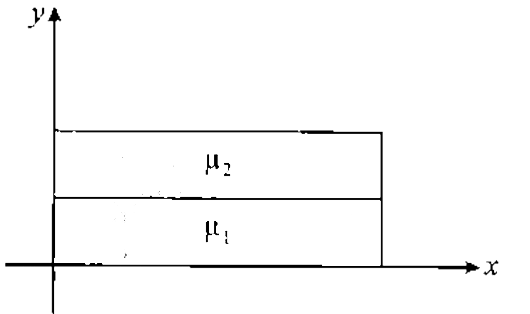
View SolutionA particle moves towards a concave mirror of focal length `30cm` along its axis and with a constant speed of `4cm//sec`. At the instant the particle is `90cm` from the pole
View SolutionA screen beaming areal image of magnification formed by a convex lens is moved through a distance x. The objectis the moved until a new image of magnification is formedon the screen. The focal length of the lens is :
View SolutionA ray incident at a point at an angle of incidence of `60^(@)` enters a glass sphere with refractive index `sqrt(3)` and it is reflected and refracted at the farther surface of the sphere. The angle between the reflected and refracted rays at this surface is:
View SolutionA layer of oil 3 cm thick is floating on a layer of coloured water 5 cm thick. Refractive index of coloured water is `5//3` and the apparent depth of the two liquids appears to be `36//7`cm. Find the refractive index of oil.
View SolutionA small filament is at the centre of a hollow glass sphere of inner and outer radii 8 cm and 9 cm respectively. The refractive index of glass is 1.50. Calculate the position of the image of the filament when viewed from outside the sphere.
View SolutionA double convex thin lens made of glass (refractive index `mu = 1.5`) has both radii of curvature of magnitude 20 cm . Incident light rays parallel to the axis of the lens will converge at a distance L such that
View SolutionTime required for making a print at a distance of 40 cm from a 60 watt lamp is 12.8 second. It the distance is decreased to 25 cm, then time required in making the similar print will be :
View SolutionA `60^@` prism has a refractive index of `1.5`. Calculate (a) the angle of incidence for minimum deviation (b) angle of minimum deviation ( c) the angle of emergence of light at maximum deviation (d) angle of maximum deviation.
View SolutionA glass sphere `(mu = 1.5)` of radius 8 cm is placed in sunlight. Where is the image of the sun formed by the light passing through the sphere after refraction by second surface of sphere ?
View SolutionA thin convergent glass lens `(mu_g=1.5)` has a power of `+5.0D.` When this lens is immersed in a liquid of refractive index `mu_1,` it acts as a divergent lens of focal length `100 cm.` The value of `mu_1` is
View SolutionA plano-convex lens of focal length 10 cm is silvered at its plane face. The distance d at which an object must be placed in order to get its image on itself is:
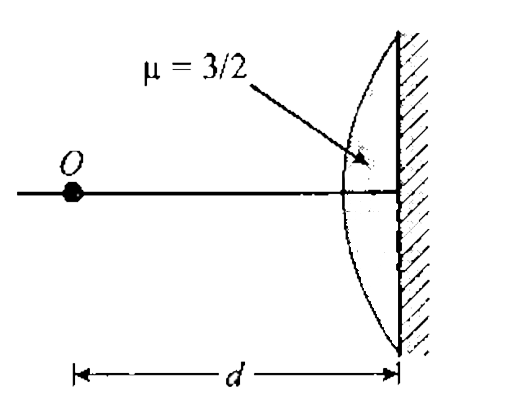
View SolutionA lens of focal length 20.0 cm and aperture radius 2.0cm is placed at a distance 30.cm from a point source of light. On the other side a screen is placed at a distance 50.0cm from the lens. The radius of spot of light formed on screen is (neglect spherical abberation through lens)
View SolutionThe dispersive power of the material of a lens is `0.04` and the focal length of the lens is `10cm`. Find the difference in the focal length (in mm) of the lens for violet and red colour.
View SolutionTwo point objects are placed on principal axis of a thin converging lens. One is 20cm from the lens and other is on the other side of lens at a distance of 40 cm from the lens. The images of both objects coincide. The magnitude of focal length of lens is :-
View Solution
Numerical MCQs Single Options Correct questions and complete solutions for chapter GEOMETRICAL OPTICS of GK PUBLICATIONS PHYSICS (HINGLISH) of Class 12
All Exercises from PHYSICS GALAXY Class 12 PHYSICS GEOMETRICAL OPTICS
- Advance MCQs with One or More Options Correct
- Conceptual MCQs Single Option Correct
- Discussion Question
- Illustrative Example
- Numerical MCQs Single Options Correct
- Practive Exercise 5.1
- Practive Exercise 5.2
- Practive Exercise 5.3
- Practive Exercise 5.4
- Practive Exercise 5.5
- Practive Exercise 5.6
- Practive Exercise 5.7
- Practive Exercise 5.8
- Practive Exercise 5.9
- Unsolved Numerical Problems